-
09/07/2021
Sexuality is associated with the quality of life of the elderly!
Revista Brasileira de Enfermagem. 2021;74:e20201272
Resumen
Sexuality is associated with the quality of life of the elderly!
Revista Brasileira de Enfermagem. 2021;74:e20201272
DOI 10.1590/0034-7167-2020-1272
Visualizações0Ver maisABSTRACT
Objective:
to analyze the association between sexuality and quality of life of Brazilian elderly residents in the community.
Methods:
a cross-sectional study conducted with 477 Brazilian elderly. The data were collected between August and October 2020. We used the EVASI and WHOQOL-OLD (World Health Organization Quality of Life). Data analysis was performed with Mann-Whitney, Spearman and Kruskal-Wallis correlation tests, with Bonferroni post-hoc application when necessary, considering a 95% confidence interval.
Results:
there was a statistical association between all dimensions of sexuality and the general quality of life of the elderly (p<0.05).
Conclusion:
the stimulation of sexuality can be configured as an innovative and holistic strategy focused on the promotion of health and active aging, since this study found the association between sexuality and the general quality of life of elderly people.
-
05/07/2021
Selenium concentrations in elderly people with Alzheimer’s disease: a cross-sectional study with control group
Revista Brasileira de Enfermagem. 2021;74:e20200984
Resumen
Selenium concentrations in elderly people with Alzheimer’s disease: a cross-sectional study with control group
Revista Brasileira de Enfermagem. 2021;74:e20200984
DOI 10.1590/0034-7167-2020-0984
Visualizações0Ver maisABSTRACT
Objective:
To investigate possible differences in plasma and erythrocyte concentrations of selenium among elderly with and without a diagnosis of Alzheimer’s disease (AD).
Methods:
Cross-sectional study, performed with an elderly group with Alzheimer’s disease, diagnosed by a geriatric doctor, and compared to an elderly group without the disease, equaling gender, education, and age. Atomic absorption spectrophotometry determined plasma and erythrocyte concentrations of total selenium (Set).
Results:
The mean age was 74.41±7.1 years in the Alzheimer’s disease group and 71.46±5.1 years among the control group. The Alzheimer’s disease group presented lower plasma concentrations (mean of 45.29±14.51 µg/dL vs. 55.14±14.01 µg/dL; p=0.004), and erythrocyte Set (median of 56.36 µg/L vs. 76.96 µg/L; p<0.001). The logistic regression model indicated an association between erythrocyte Set concentrations and diagnosis of Alzheimer’s disease (p=0.028).
Conclusion:
Elderly with Alzheimer’s disease present lower selenium concentrations in the evaluated organic compartments.
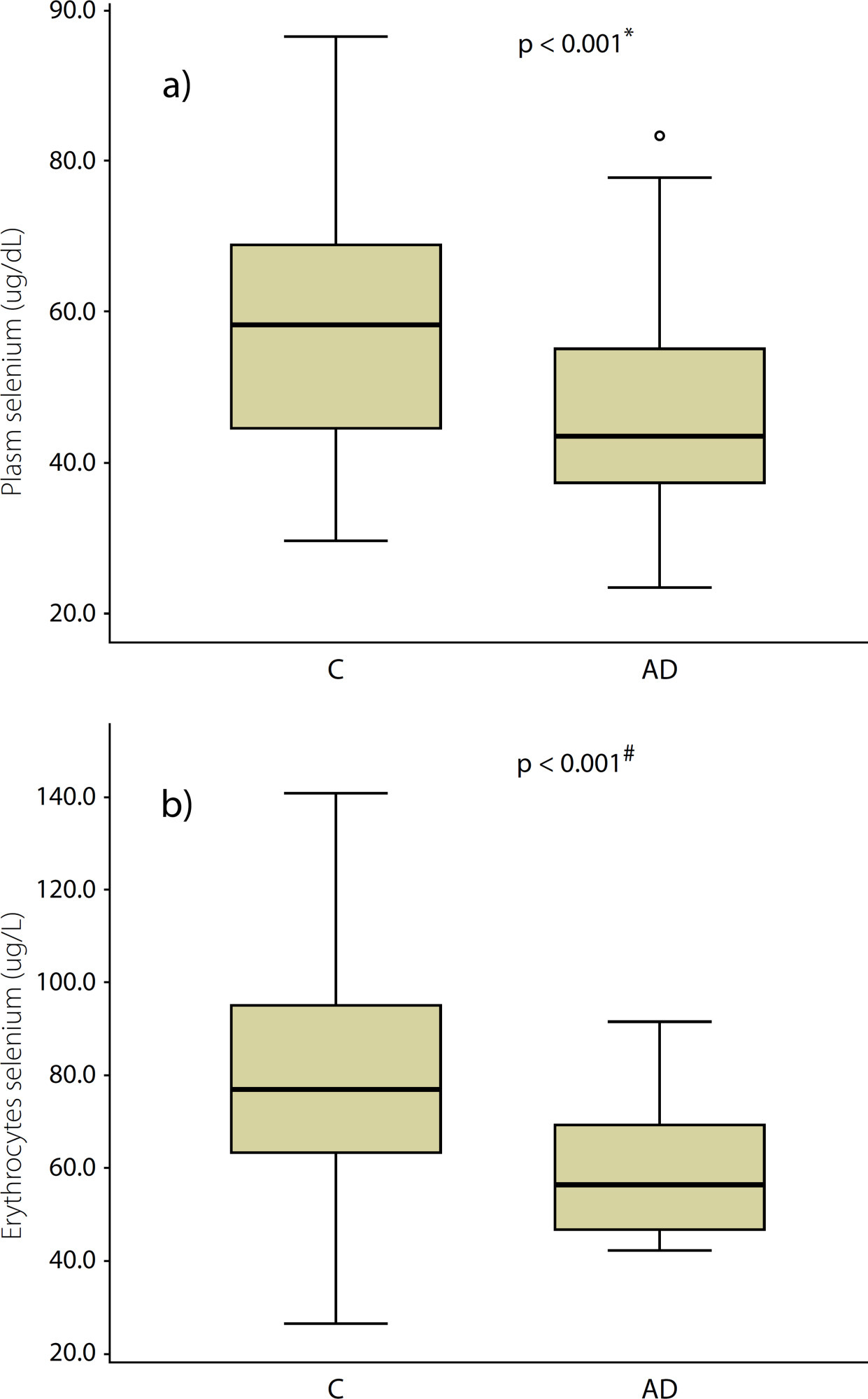
-
ARTÍCULO DE REVISIÓN05/07/2021
Nursing care related to fall prevention among hospitalized elderly people: an integrative review
Revista Brasileira de Enfermagem. 2021;74:e20200904
Resumen
ARTÍCULO DE REVISIÓNNursing care related to fall prevention among hospitalized elderly people: an integrative review
Revista Brasileira de Enfermagem. 2021;74:e20200904
DOI 10.1590/0034-7167-2020-0904
Visualizações0Ver maisABSTRACT
Objective:
to identify scientific productions on nursing care related to fall risk prevention among hospitalized elderly people.
Methods:
an integrative literature review from 2015 to 2019 in the PubMed/MEDLINE, Scopus, Web of Science, LILACS, BDENF, SciELO and CINAHL databases, in Portuguese, English and Spanish. The keywords were elderly, hospitalization, accidents due to falls, nursing care.
Results:
thirty-three publications were analyzed. The synthesis of the studies resulted in the categories: Clinical nursing assessments to prevent falls among hospitalized elderly people; Fall risk factors for elderly people; Fall risk prevention strategies for elderly people.
Final considerations:
it was found that the scientific knowledge produced on nursing care related to fall risk prevention for hospitalized elderly people evidences the clinical assessment, risk factors and strategies such as nursing care, contributing to foster self-care behavior and promotion security for elderly people.

-
05/07/2021
Educational technology for bathing/hygiene of elders at home: contributions to career knowledge
Revista Brasileira de Enfermagem. 2021;74:e20200890
Resumen
Educational technology for bathing/hygiene of elders at home: contributions to career knowledge
Revista Brasileira de Enfermagem. 2021;74:e20200890
DOI 10.1590/0034-7167-2020-0890
Visualizações0Ver maisABSTRACT
Objective:
to build and validate an educational booklet for bathing and hygiene of elders at home.
Methods:
a methodological study, developed through data collection in literature and situational diagnosis, booklet construction, material qualification through validation by expert judges (11 nurses) and target audience (30 caregivers). Data were analyzed descriptively. The minimum content validity index of 0.80 was considered.
Results:
in content and appearance validation, experts assigned Content Validity Index global of 0.92, while for assessment of the material’s suitability, the booklet was classified as “superior”, with an average of 90%. In the validation of caregivers, the overall Content Validity Index was 1.0.
Conclusion:
the booklet was successfully validated and can be considered in the context of health education and collaborate with an adequate and safe practice of bathing and hygiene of elders at home.
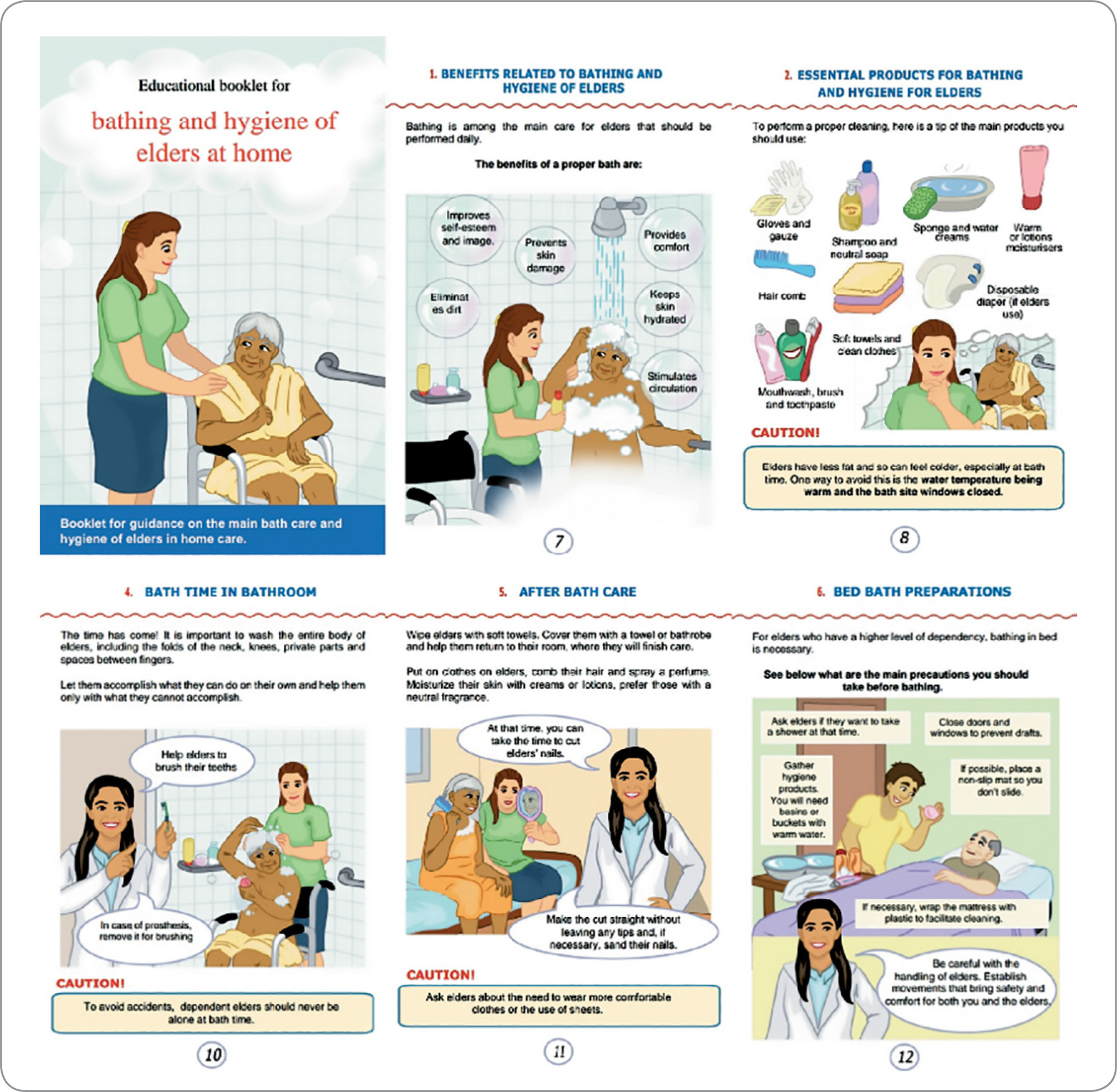
-
05/07/2021
Factors associated with urinary tract infection in a Nursing Home
Revista Brasileira de Enfermagem. 2021;74:e20200813
Resumen
Factors associated with urinary tract infection in a Nursing Home
Revista Brasileira de Enfermagem. 2021;74:e20200813
DOI 10.1590/0034-7167-2020-0813
Visualizações1Ver maisABSTRACT
Objective:
to analyze the factors associated with urinary tract infection occurrence in institutionalized elderly.
Methods:
this is a cross-sectional, analytical, quantitative study with 116 elderly people from a Nursing Home. Urinary tract infection diagnosis was carried out through urine culture and clinical assessment. Demographic data and associated factors were obtained from medical records. Statistical analysis included bivariate analysis and logistic regression models.
Results:
the factors associated with urinary tract infection (p<0.05) were being female; wheelchair user; diaper use; diuretic use; urinary and bowel incontinence; type 1 diabetes; benign prostatic hyperplasia; dehydration.
Conclusion:
this study revealed that it is important to consider non-modifiable factors such as sex and clinical comorbidities; however, dehydration, a modifiable factor, increased the chances of developing urinary tract infections by 40 times among institutionalized elderly and demands greater attention from the health team.
-
28/06/2021
Trends in fertility rates, proportion of antenatal consultations and caesarean sections among Brazilian adolescents
Revista Brasileira de Enfermagem. 2021;74:e20200884
Resumen
Trends in fertility rates, proportion of antenatal consultations and caesarean sections among Brazilian adolescents
Revista Brasileira de Enfermagem. 2021;74:e20200884
DOI 10.1590/0034-7167-2020-0884
Visualizações1Ver maisABSTRACT
Objective:
To analyze the temporal trends in the fertility rate, proportion of antenatal consultations and caesarean sections in Brazilian adolescents aged 15 to 19, between 2000 and 2015. Methods: The fertility rate, proportion of prenatal consultations and proportion of routes of birth were calculated using data from DATASUS. The trend analysis was performed using the Prais-Winsten regression model and the annual percentage change.
Results:
There was a trend of reduction of 3.5% per year in the fertility rate among adolescents (p<0.05), in addition to an increasing trend of 6% per year in the proportion of more than six antenatal consultations (p <0.0001) and an increasing trend of 6.8% per year in the proportion of caesarean sections (p<0.0001).
Conclusion:
Despite the decreasing trend in fertility rates among Brazilian adolescents, they remain high. Also noteworthy is the growing trend for caesarean sections, even with improved access to antenatal care.
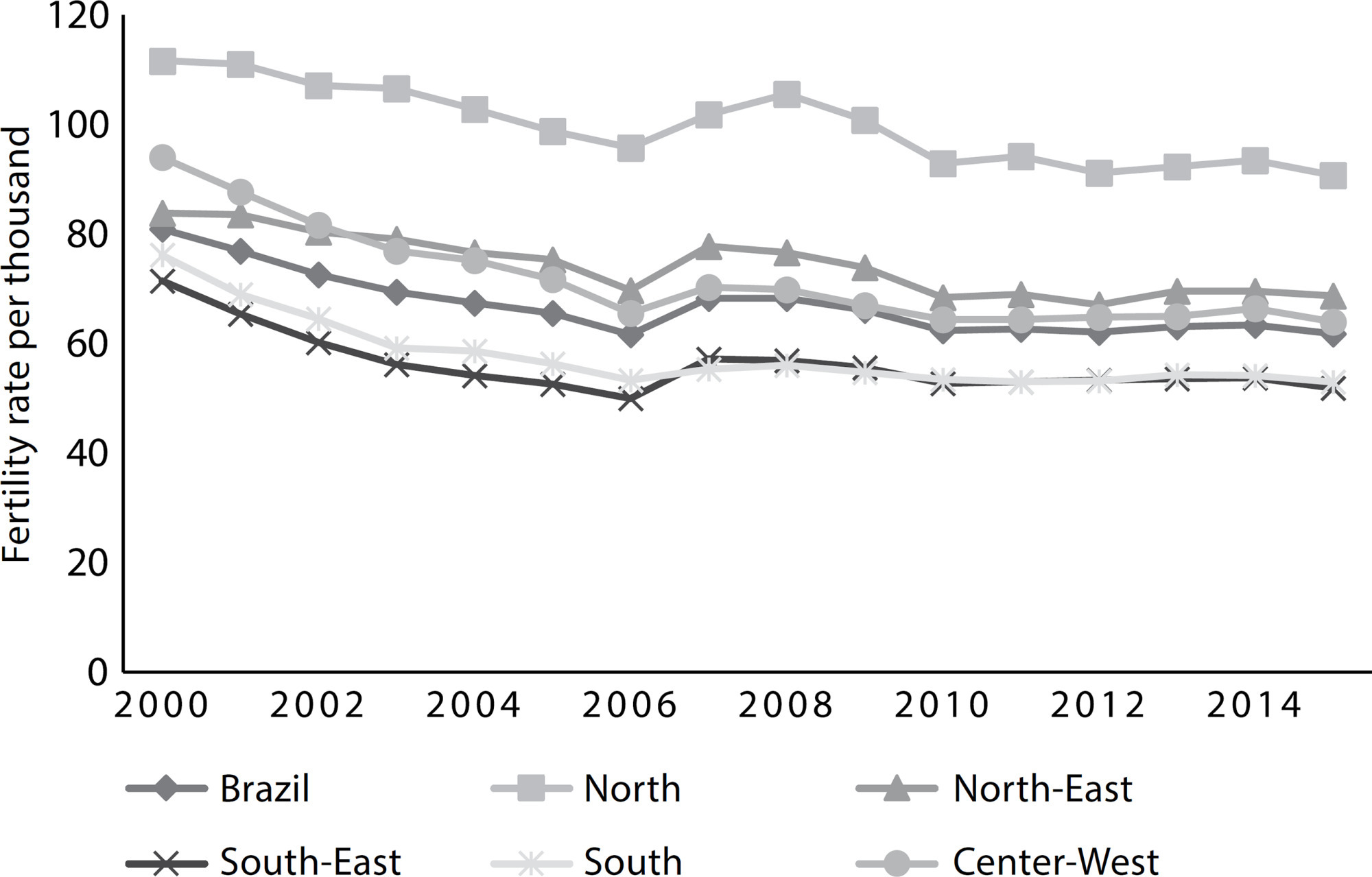
-
28/06/2021
Validation of an instrument for systematizing nursing care in pediatrics
Revista Brasileira de Enfermagem. 2021;74:e20200222
Resumen
Validation of an instrument for systematizing nursing care in pediatrics
Revista Brasileira de Enfermagem. 2021;74:e20200222
DOI 10.1590/0034-7167-2020-0222
Visualizações0Ver maisABSTRACT
Objective:
to verify the validity of indicators’ content referring to the instrument for data collection in children aged 0 to 5 years hospitalized in a pediatric clinic.
Method:
a cross-sectional methodological study was carried out with 11 experts between January and May 2018. For data collection, the steps for validating the instrument’s content were respected. For data analysis, Content Validity Index and Kappa agreement analysis were used.
Results:
after content analysis, a Content Validity Index of 0.94 and Kappa 0.71 was issued according to the experts’ suggestions 81.9%. Therefore, the instrument was suitable for applicability.
Conclusion:
the instrument proved to be valid in terms of content for pediatric care, contributing significantly to improving care for hospitalized children aged 0 to 5 years.
-
28/06/2021
Individual and contextual variables associated with smoking and alcohol consumption during pregnancy
Revista Brasileira de Enfermagem. 2021;74:e20200804
Resumen
Individual and contextual variables associated with smoking and alcohol consumption during pregnancy
Revista Brasileira de Enfermagem. 2021;74:e20200804
DOI 10.1590/0034-7167-2020-0804
Visualizações1Ver maisABSTRACT
Objective:
to analyze the association between individual characteristics and housing context with smoking and alcohol consumption during pregnancy.
Methods:
a cross-sectional study with a probabilistic sample of 3,580 pregnant women who underwent prenatal care in the Unified Health System in 2019. The outcomes were firsthand, secondhand smoke and alcohol consumption during pregnancy. Individual characteristics and the living environment were used as exploratory variables.
Results:
living in a neighborhood with episodes of violence, without social cohesion and without urban elements that encourage physical activity was associated with smoking. Alcohol consumption during pregnancy was associated with living in environments that do not encourage physical activity. Smoking was also associated with lower income and education.
Conclusions:
individual characteristics and the living environment are associated with smoking, secondhand smoke and alcohol consumption during pregnancy.
-
ARTÍCULO ORIGINAL04/12/2020
Lesão por pressão relacionada ao uso de equipamentos de proteção individual na pandemia da COVID-19
Revista Brasileira de Enfermagem. 2020;73:e20200670
Resumen
ARTÍCULO ORIGINALLesão por pressão relacionada ao uso de equipamentos de proteção individual na pandemia da COVID-19
Revista Brasileira de Enfermagem. 2020;73:e20200670
DOI 10.1590/0034-7167-2020-0670
Visualizações0RESUMO
Objetivo:
Descrever prevalência e fatores associados da lesão por pressão relacionada ao uso de equipamentos de proteção individual durante a pandemia da COVID-19.
Métodos:
Estudo transversal realizado por meio de instrumento disponibilizado em redes sociais com 1.106 profissionais de saúde. Os dados foram analisados por meio de estatística descritiva e comparada, considerando valor de p < 0,05.
Resultados:
Houve prevalência de 69,4% para lesão por pressão relacionada ao uso do equipamento de proteção individual, com uma média de 2,4 lesões por profissional. Os fatores significativos foram: menores de 35 anos de idade, trabalhar e fazer uso de equipamentos de proteção individual por mais de seis horas no dia, em unidades hospitalares e sem o uso de insumos para proteção.
Conclusão:
A lesão por pressão relacionada ao uso de dispositivos médicos apresentou alta prevalência nessa população. O reconhecimento da lesão nesses profissionais possibilita avançar em estratégias de prevenção.
Palavras-chave: CoronavírusEquipamento de Proteção IndividualLesão por PressãoPandemiasPessoal de SaúdeVer mais -
ARTÍCULO ORIGINAL13/07/2020
Dermatite associada à incontinência em idosos: prevalência e fatores de risco
Revista Brasileira de Enfermagem. 2020;73:e20180475
Resumen
ARTÍCULO ORIGINALDermatite associada à incontinência em idosos: prevalência e fatores de risco
Revista Brasileira de Enfermagem. 2020;73:e20180475
DOI 10.1590/0034-7167-2018-0475
Visualizações0Ver maisRESUMO
Objetivo:
Determinar prevalência e fatores de risco para dermatite associada à incontinência em idosos.
Método:
Estudo transversal exploratório realizado em hospitais públicos. Obtevese prevalência da dermatite e associações pelo cálculo da razão. A dimensão do efeito foi estimada pela razão de chances com intervalo de confiança de 95% e significância estatística p < 0,05.
Resultados:
Incluíram-se 138 idosos, média de idade 77,2 anos (± 9,3); 69 (50%) com incontinência fecal e urinária combinadas. A prevalência de dermatite foi 36,2% (50); 28% (14) apresentavam lesão por pressão; 14% (7), candidose. Foram fatores de risco: maior tempo de internação (Odds Ratio = 5,8 [2,6-12,9]), obesidade (Odds Ratio = 3,6 [1,2-10,4]), alto nível de dependência (Odds Ratio = 2,4 [1,1-5,0]) e alto risco para lesão por pressão (Odds Ratio = 6,1 [1,4-26,9]).
Conclusão:
Houve alta prevalência de dermatite associada à incontinência. O reconhecimento precoce dos fatores de risco favorece ações preventivas efetivas.
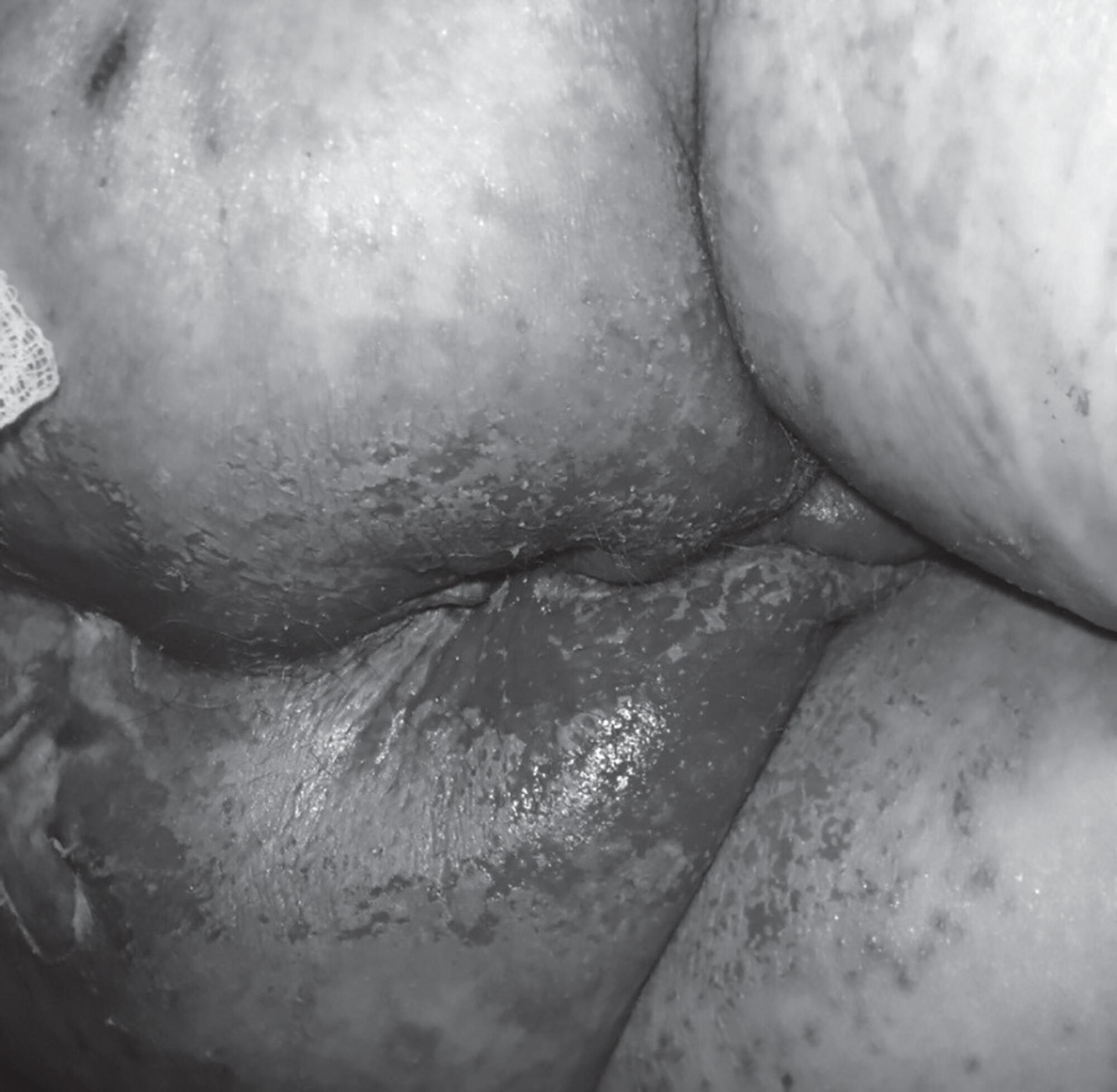
-
ARTÍCULO ORIGINAL21/10/2019
Nursing care systematization: perceptions and knowledge of the Brazilian nursing
Revista Brasileira de Enfermagem. 2019;72(6):1547-1553
Resumen
ARTÍCULO ORIGINALNursing care systematization: perceptions and knowledge of the Brazilian nursing
Revista Brasileira de Enfermagem. 2019;72(6):1547-1553
DOI 10.1590/0034-7167-2018-0606
Visualizações0Ver maisABSTRACT
Objective:
to present the perception and knowledge of Brazilian nursing nurses and academics regarding Nursing Care Systematization.
Method:
a descriptive study, carried out in the first half of 2018.
Results:
of the 596 respondents, 86% perceived Nursing Care Systematization as very important, but only 60.9% used it in their care practice. Its use was statistically associated with a higher level of training. Non-utilization was associated with the perception that it is irrelevant and with little knowledge on the Nursing Process, even in the face of recognition of its obligation. Among professionals who wish to learn more about the subject, understanding the application of the process, especially the planning step, is perceived as a necessity.
Conclusion:
the relevance perception of systematization and levels of knowledge of the professional/academic are directly related to the use or not of Nursing Care Systematization principles.

-
ARTÍCULO DE REVISIÓN05/12/2019
Vulnerability of the elderly: a conceptual analysis
Revista Brasileira de Enfermagem. 2019;72:337-344
Resumen
ARTÍCULO DE REVISIÓNVulnerability of the elderly: a conceptual analysis
Revista Brasileira de Enfermagem. 2019;72:337-344
DOI 10.1590/0034-7167-2018-0728
Visualizações0Ver maisABSTRACT
Objective:
To analyze the concept of vulnerability of the elderly.
Method:
A concept analysis, according to the method proposed by Walker and Avant, operationalized through integrative review through search in scientific data portals using the
Descriptors:
Health vulnerability, aged, health services for the aged, health of the elderly, vulnerable populations and geriatric health services. To compose the literary corpus, 36 studies were selected.
Results:
Concept antecedents, as well as its attributes, were identified in individual, social and programmatic characteristics, which make up the characteristics of “vulnerability of the elderly”, besides consequences of the phenomenon. These characteristics were analyzed with emphasis on aspects that contribute to the process of vulnerability of the elderly.
Conclusion:
The study demonstrated the multidimensionality of the phenomena studied, highlighting the peculiarities of vulnerability during aging. However, there is a need for further studies on the construct.
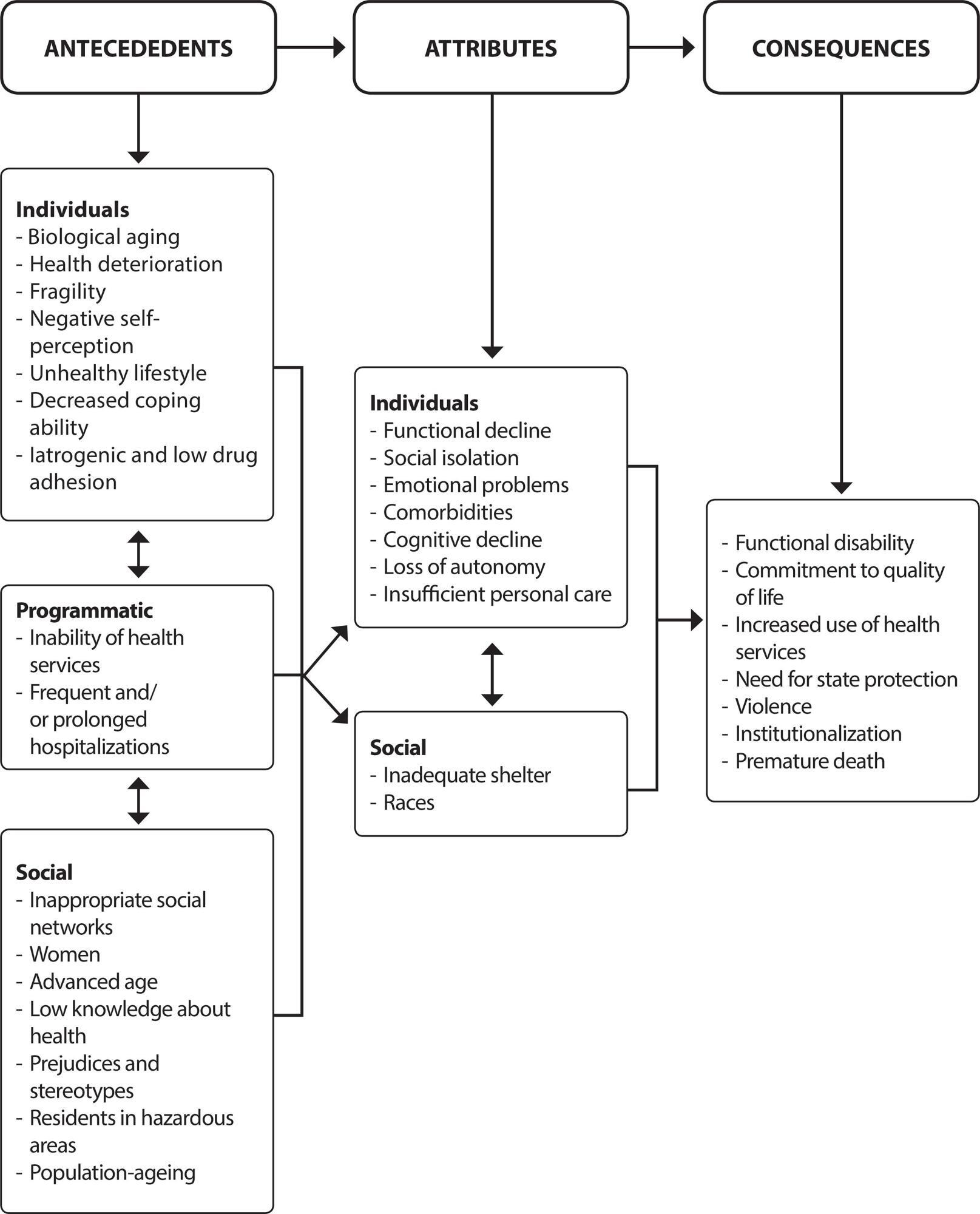
-
ARTÍCULO ORIGINAL21/10/2019
Workloads and burnout of nursing workers
Revista Brasileira de Enfermagem. 2019;72(6):1435-1441
Resumen
ARTÍCULO ORIGINALWorkloads and burnout of nursing workers
Revista Brasileira de Enfermagem. 2019;72(6):1435-1441
DOI 10.1590/0034-7167-2017-0659
Visualizações0Ver maisABSTRACT
Objective:
to identify workloads in nursing work and its association with nursing worker burnout.
Method:
a cross-sectional study, including 211 nursing workers from a university hospital, between July and August 2016. For the analysis, the descriptive statistics, Chi-Square Test, Fisher’s Exact Test and Mann Whitney U-Test were used.
Results:
the most evidenced loads were biological. A significant association was found between workloads and workers’ occupation, as well as a significant association between workloads and worker burnout. Burnout caused upper limb pain, neck and lumbar pain, lower limb pain, muscle spasm, lower limb edema, mental fatigue, headache, nervousness, and forgetfulness.
Conclusion:
workloads identification is a subsidy for the promotion of interventions that minimize the burnout generated to the health of the nursing worker.
-
19/08/2019
La intervención humor en la interacción enfermero-paciente
Revista Brasileira de Enfermagem. 2019;72(4):1078-1085
Resumen
La intervención humor en la interacción enfermero-paciente
Revista Brasileira de Enfermagem. 2019;72(4):1078-1085
DOI 10.1590/0034-7167-2018-0609
Visualizações0RESUMEN
Objetivo:
Describir los factores que influencian el uso del humor en el cuidado de enfermería, su aplicabilidad y beneficios.
Método:
Revisión de alcance según la metodología de Arksey y O’Mally. Se investigaron artículos publicados entre 2008 y 2018, en las plataformas EBSCO Host, Biblioteca Virtual en Salud y Google Académico.
Resultados:
Se han identificado 465 artículos e incluidos 17 de ellos. Se encontró información sobre la definición de humor; su aplicabilidad como intervención de enfermería; el humor como herramienta para mejorar la comunicación y la relación entre el enfermero y el paciente; factores de influencia; el tipo de intervenciones de humor; beneficios del humor en la atención de salud y; las limitaciones y precauciones de intervención del humor.
Conclusión:
El humor promueve la comunicación, las relaciones y el bienestar; ayuda a manejar situaciones difíciles y desagradables, reduce la tensión, la incomodidad y el estrés; y fortalecer el sistema inmunológico. Esta intervención debe usarse con precaución.
Palavras-chave: ComunicaciónEnfermeríaEvaluación del Resultado de la Atención al PacienteIngenio y Humor como AsuntoRelaciones Enfermera-PacienteVer mais -
29/01/2021
Violência doméstica contra a mulher na pandemia: estratégias de enfrentamento divulgadas pelas mídias digitais
Revista Brasileira de Enfermagem. 2021;74:e20200631
Resumen
Violência doméstica contra a mulher na pandemia: estratégias de enfrentamento divulgadas pelas mídias digitais
Revista Brasileira de Enfermagem. 2021;74:e20200631
DOI 10.1590/0034-7167-2020-0631
Visualizações0RESUMO
Objetivo:
conhecer as estratégias de enfrentamento da violência doméstica contra a mulher divulgadas pelas mídias digitais no início da pandemia de COVID-19.
Métodos:
estudo documental de abordagem qualitativa. A busca aconteceu de 11 de março a 30 de abril de 2020, em quatro fontes: jornais e portais online, rede social, páginas oficiais governamentais e portais do terceiro setor. Realizou-se análise de conteúdo temática dos achados.
Resultados:
foram identificadas 77 estratégias na imprensa jornalística, 93 na rede social, 45 nos portais governamentais e 40 nas organizações do terceiro setor. Da análise, emergiram três categorias empíricas: Estratégias para comunicação com as mulheres; Estratégias adotadas pelos serviços de atendimento; Estratégias para informar a população.
Considerações finais:
a maior parte das estratégias foram adaptações de serviços já existentes, centradas na denúncia da violência pelas mulheres.
Palavras-chave: Estratégias NacionaisMeios de ComunicaçãoPandemiasViolência Contra a MulherViolência DomésticaVer mais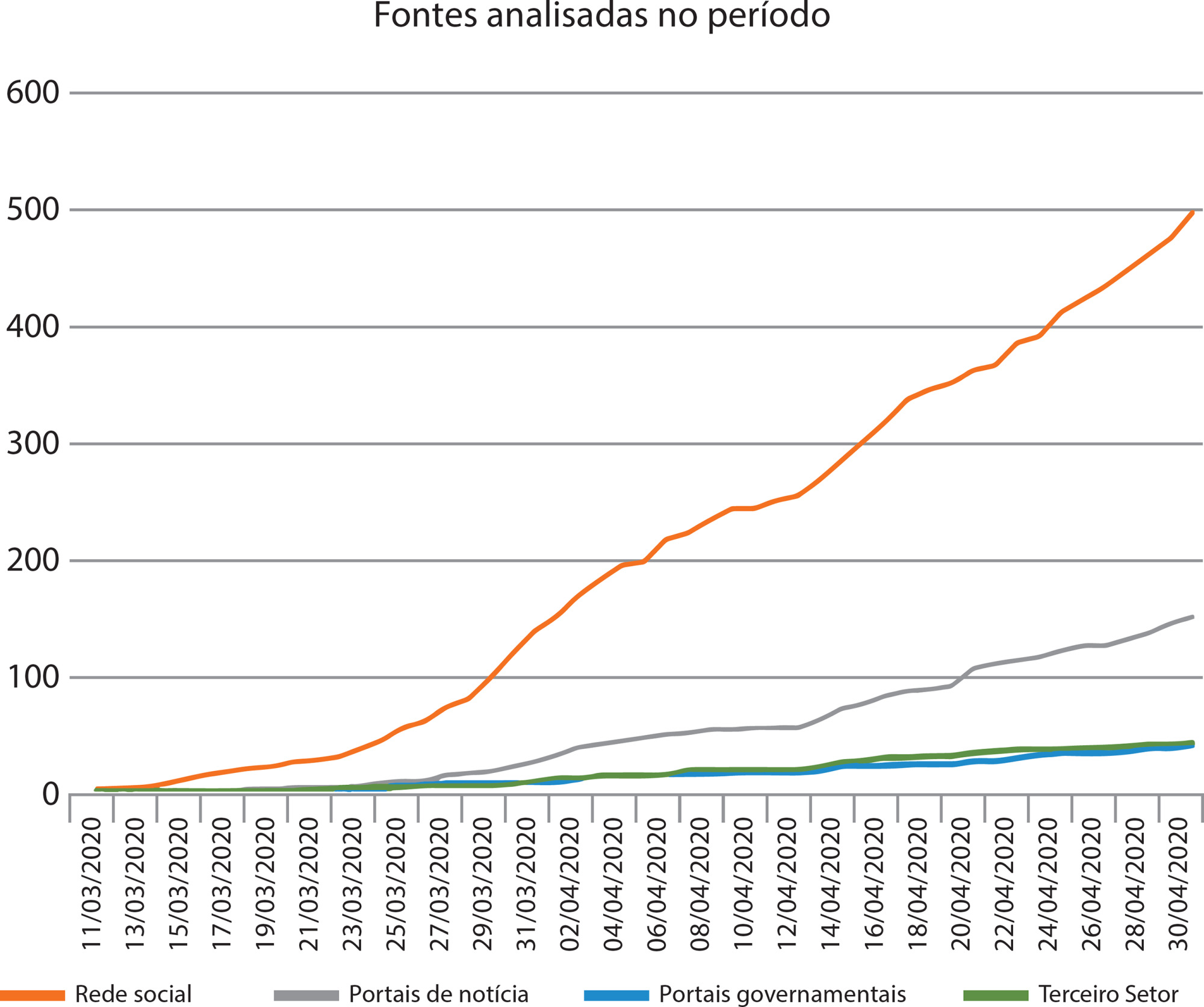
-
20/01/2021
Burnout Syndrome and Associated Factors in Intensive Care Unit Nurses
Revista Brasileira de Enfermagem. 2021;74:e20190535
Resumen
Burnout Syndrome and Associated Factors in Intensive Care Unit Nurses
Revista Brasileira de Enfermagem. 2021;74:e20190535
DOI 10.1590/0034-7167-2019-0535
Visualizações0Ver maisABSTRACT
Objective:
to estimate prevalence and factors associated with Burnout Syndrome in intensive care nurses in a city in the state of Bahia.
Methods:
a cross-sectional, population-based study carried out with 65 intensive care nurses through a self-administered questionnaire, from July to November 2016, containing sociodemographic data, lifestyle, work characteristics. To define burnout syndrome, the Maslach Burnout Inventory was used.
Results:
Burnout Syndrome prevalence was 53.6%, an association was observed with age, tobacco consumption, alcohol use, weekly night shift hours, employment relationship, having an intensive care specialist title, number of patients on duty, monthly income and considering active or high-strain job.
Conclusion:
the results of this study can contribute to expanding the discussion on stressful working conditions in Intensive Care Units.
Búsqueda
Buscar en:
Nuvem de Tags
Adolescente (85) Atenção Primária à Saúde (239) COVID-19 (91) Criança (91) Cuidados de Enfermagem (269) Educação em Enfermagem (151) Educação em Saúde (139) Enfermagem (930) Enfermagem Pediátrica (86) Estudantes de Enfermagem (77) Estudos de Validação (131) Família (87) Idoso (208) Promoção da Saúde (99) Qualidade de Vida (104) Saúde do Trabalhador (86) Saúde Mental (145) Saúde Pública (82) Segurança do Paciente (150) Tecnologia Educacional (100)



